Quick search
CTRL+K
Quick search
CTRL+K
Kelvin
Potatoes are a versatile and beloved vegetable that can be grown in your very own backyard. Whether you’re an experienced gardener or a beginner, growing potatoes can be a rewarding and enjoyable experience. In this comprehensive guide, we will provide you with valuable tips and techniques to ensure a successful potato harvest.
Potatoes come in a wide range of varieties, each with its own characteristics and uses. Determining your desired potato type is crucial before you begin planting. Some common potato types include russet, red, Yukon Gold, and fingerling potatoes. Consider factors such as taste, cooking method, and disease resistance when selecting your potato variety.

Potatoes thrive in loose, well-draining soil. Start by preparing your soil a few weeks before planting. Remove any weeds, rocks, or debris from the planting area. Loosen the soil using a garden fork or tiller to a depth of about 8-10 inches. Incorporate organic matter, such as compost or well-rotted manure, to improve soil fertility and drainage.
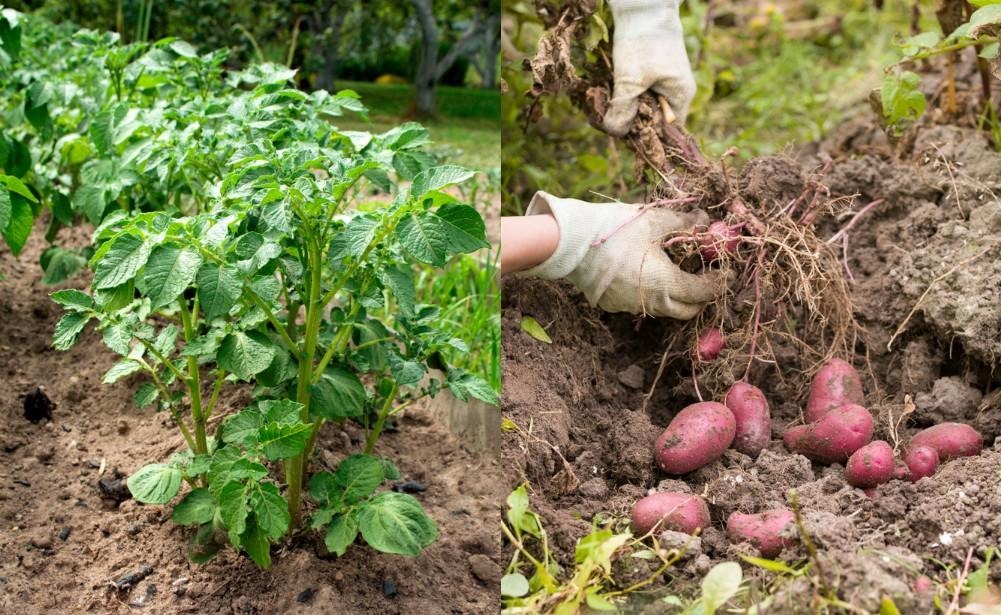
Potatoes are typically grown from seed potatoes, which are small tubers or pieces of larger potatoes. Avoid using potatoes from the grocery store, as they may carry diseases or have been treated to inhibit sprouting. Cut seed potatoes into chunks, ensuring that each piece contains at least one “eye” or bud.
Plant the seed potatoes about 4-6 inches deep and 12-15 inches apart in rows, leaving about 2-3 feet between rows. It’s a good idea to space rows wider if you plan to hill your potatoes (explained in the next tip). Remember to place the seed potato with the eyes facing upward for proper sprouting.
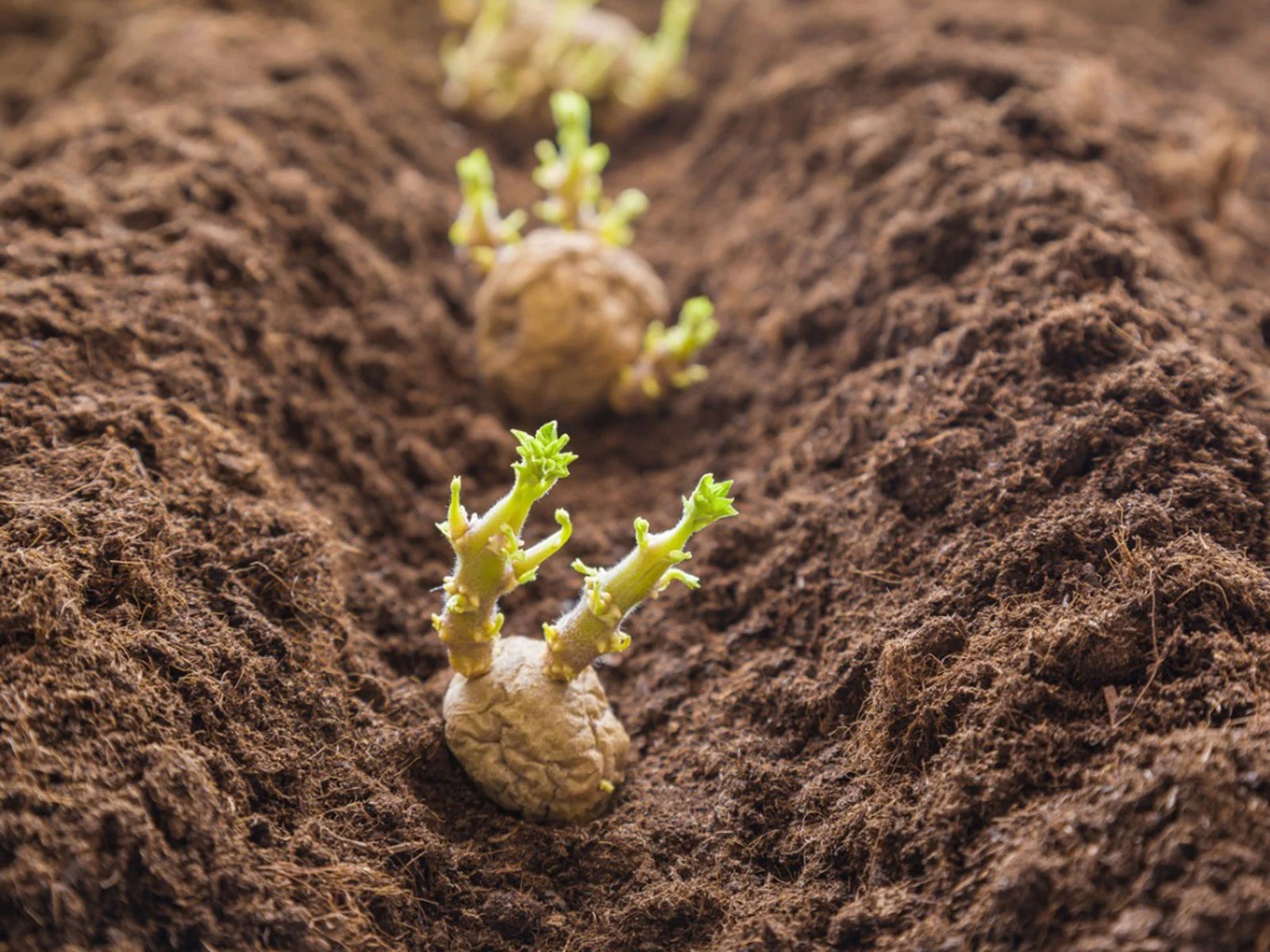
Hilling is an essential technique for growing potatoes. As the plants grow, mound soil around the stems to encourage tuber development and protect the emerging potatoes from sunlight, which can cause them to turn green and become toxic. Start hilling when the plants reach about 6 inches in height and continue hilling every few weeks until the plants flower.

Consistent moisture is crucial for a successful potato crop. Water your potatoes regularly, aiming to keep the soil evenly moist but not waterlogged. Irrigate deeply, ensuring the water reaches the root zone. Applying a layer of organic mulch, such as straw or shredded leaves, helps retain moisture, suppress weeds, and maintain a cool soil temperature.

Potatoes are heavy feeders, so it’s essential to provide them with adequate nutrients. Before planting, incorporate a balanced fertilizer into the soil. During the growing season, you can side-dress the plants with a nitrogen-rich fertilizer, such as blood meal or fish emulsion, to promote healthy foliage growth. Be sure to follow the recommended application rates to avoid over-fertilization.
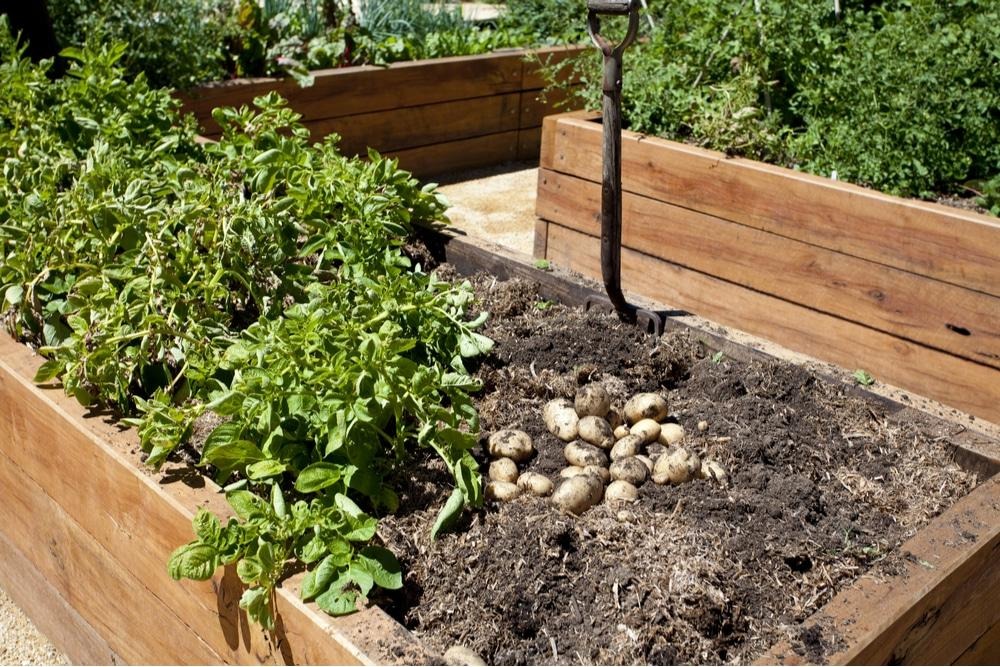
Potatoes can be susceptible to various pests and diseases, including potato beetles, aphids, late blight, and early blight. Monitor your plants regularly for signs of infestation or disease. Consider using natural pest control methods like handpicking insects or using organic insecticides when necessary. Crop rotation and planting disease-resistant varieties can also help prevent or minimize the impact of diseases.
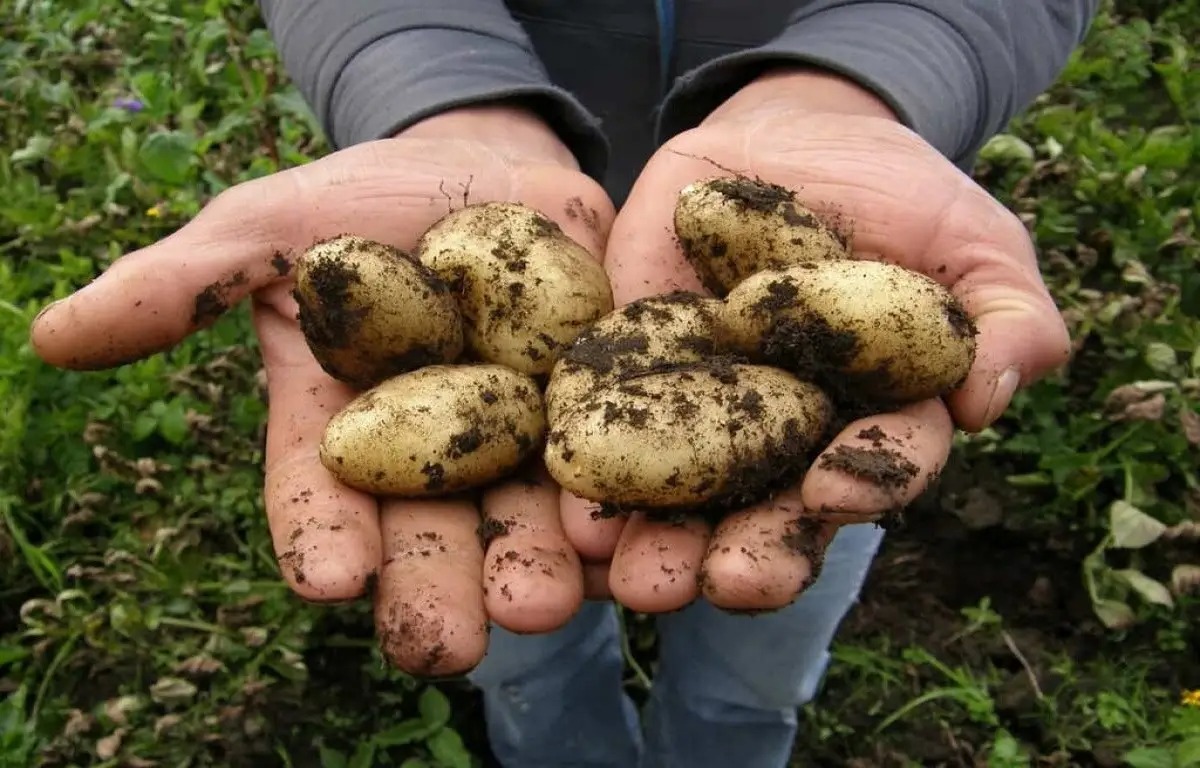
Potatoes are typically ready for harvest when the plants start to yellow and die back. Gently dig around the base of the plant and carefully lift the tubers from the soil. Avoid piercing or damaging the potatoes during harvest. Allow them to dry in a cool, dark, and well-ventilated area for a few hours before storing.
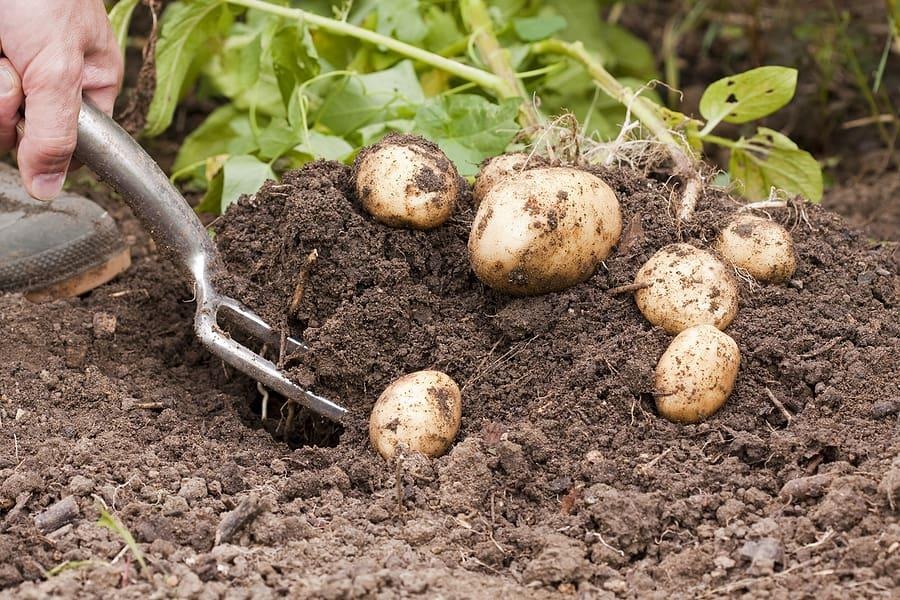
Harvesting potatoes at the right time is crucial to ensure the best flavor, texture, and storage quality. The timing of the harvest depends on the type of potatoes you are growing and your specific preferences. Here are some guidelines on when and how to harvest potatoes:
1. Observe the Foliage:
Keep an eye on the foliage of your potato plants. When the plants start to yellow and die back, it is an indication that the potatoes are maturing and reaching harvest time. Typically, this occurs around 90 to 120 days after planting, but it can vary based on the potato variety.
2. Check for Mature Tubers:
To determine if the potatoes are ready for harvest, gently dig around the base of the plant and feel for mature tubers. Avoid disturbing the plant too much during this process to avoid damaging the potatoes.
3. Size Matters:
Potatoes can be harvested at different sizes, depending on your preference. “New” or “baby” potatoes can be harvested when they are small and tender, usually around 1 to 2 inches in diameter. For larger, fully mature potatoes, wait until they reach their desired size, typically around 2 to 3 inches in diameter.
4. Test the Skin:
One way to determine if the potatoes are mature is to rub your thumb against the skin. If the skin rubs off easily and feels thin, the potatoes may not be fully mature. Mature potatoes will have a thicker, more durable skin that does not easily rub off.
5. Harvesting Method:
To harvest your potatoes, use a garden fork or shovel to carefully dig under the plant and lift the tubers from the soil. Start digging a few inches away from the plant to avoid damaging the potatoes. Gently lift the potatoes out of the ground, shaking off excess soil. Avoid pulling or yanking on the stems, as this can damage the tubers.
6. Drying and Curing:
After harvesting, allow the potatoes to dry for a few hours in a cool, shaded, and well-ventilated area. This helps the potatoes develop a tougher skin, which enhances their storage quality. Do not wash the potatoes at this stage, as moisture can promote rotting during storage.
7. Storage:
Once the potatoes have dried, store them in a cool, dark, and well-ventilated space. Ideal storage conditions are around 45 to 50°F (7 to 10°C) with high humidity. Avoid exposure to sunlight, as it can cause the potatoes to turn green and produce a toxic compound called solanine. Place the potatoes in breathable containers such as burlap sacks or wooden crates to allow for airflow.
By following these guidelines, you can ensure a successful potato harvest and enjoy the fruits of your labor for months to come. Harvesting at the right time and providing proper storage conditions will help maintain the quality and flavor of your homegrown potatoes.
Growing potatoes can be a satisfying and fruitful endeavor for gardeners of all levels. By following these tips for selecting the right potato variety, preparing the soil, planting correctly, providing proper care, and managing pests and diseases, you’ll be on your way to a bountiful harvest of delicious, homegrown potatoes. So, roll up your sleeves, grab your gardening tools, and get ready to enjoy the satisfaction of growing your own spuds!
Copyright © USANearMe | All rights reserved.